I first went to Krakow in the summer of 1996 (June 22 to be precise, according to my journal), catching a train in Radom at five in the morning to arrive some time around eight. I’d just arrived in Poland with my fellow Peace Corps volunteers, most of whom and come like I, to teach English. Half a dozen of us boarded the train, found an empty compartment, and chattered away as the train clattered away. “I never really thought I would be in this city. To be honest, I never thought about this city. But never the less, here I am,” I wrote that first evening.
What struck me then was the ancient architecture: St. Mary’s Basilica on the rynek, Wawel castle on the hill overlooking the old town, the rynek itself with its cobbles and pigeons. When I arrived at my home for two years (which eventually stretched to seven years), I went to Krakow frequently, and the churches and ancient architecture grew known and, dare I say it, common. It became part of “home” in an extended sense.
What I came to notice, sadly, was the negative, in particular the old bus station, where I arrived and departed for every trip to Krakow (and every trip to the north). It was small, with a crowded waiting room and only six ticket windows, most of which remained shuttered. Lines for tickets were long; lines waiting to get on buses out back were long. And everything — everything — was dull gray concrete.
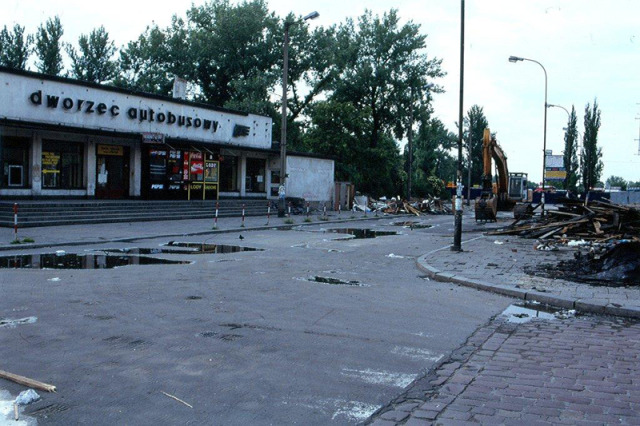
I hated waiting there. It was stuffy in the summer and freezing in the winter. It reeked of stale beer and urine, and everyone seemed angry — and no wonder. Yet in the mid-nineties, there was no other option. There were a handful of private bus companies running, but the vast majority was the state-run Polskie Koleje Samochodowe, known simple as PKS. And due to where I lived, I had to wait somewhere. There was one direct bus to Lipnica Wielka that left every evening around six. If I finished at three, I had three hours.
There were options, of course. Most often, I simply planned my arrival to the station at around 5:30 to minimize waiting. In the meantime, I wondered the streets, sat in some cheap restaurant drinking tea, or dropped into a church to sit for a while.
The best option was a church: it was quite, relatively warm in the winter and cool in the summer, and free. I could find a quiet spot, sit, and read. Wandering the streets was always enjoyable — who doesn’t enjoy wandering around an ancient city? — but in January, it was simply miserable.
Restaurants were the trickiest of all. The decent ones (i.e., clean and well-light) were often more expensive than what I was willing to pay. There was a McDonald’s at the end of Florianska Street even in the mid-nineties, and I often dropped in for the simple reason of the cleanness of its restrooms and the brightness of its lights. But it was always crowded, often with fellow travelers like me, so the management quickly instituted a policy that restricted the restroom facilities to paying customers. I simply began buying a small order of fries or a small drink as an easy way around the problem.
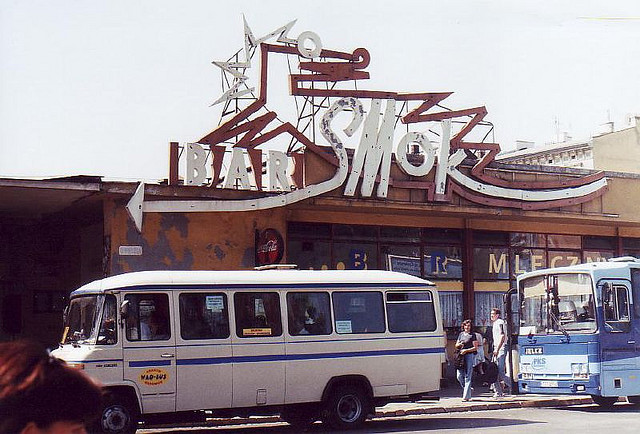
On the other hand, I learned I could always visit a milk bar for a quick, decent, cheap bite and a warm place to sit. Opposite the bus and train stations, in fact, there was a famous one, though notorious might be a better term: Bar Smok — the Dragon Bar.
I didn’t need to see a faded picture from the sixties to know how old the place was: one look at the sign was enough.
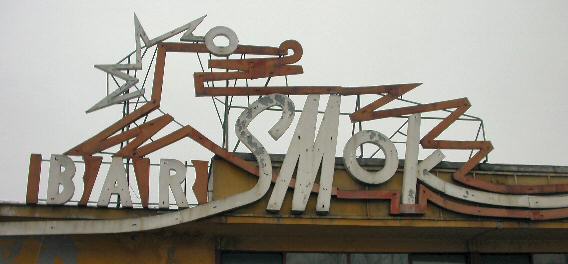
It was legend, though. Everyone knew about Bar Smok — Poles from all over the nation and even the Americans scattered throughout the country in my PC group.
I believe I ate there once. That was enough. I likely waited there a couple more times, but as far as eating — by the late-90s, no thanks. It wasn’t the food as much as the atmosphere. As Gazetta Wyborcza explains it:
Krakowscy bonzowie pili tu gorzałkę, pielgrzymi zajadali się bułkami z jajkiem, a pechowcy czasami tracili obiad, podjedzony przez bezdomnych. Ale bigos i grochówka na stojąco były tu bezkonkurencyjne. (Source)
That introduction explains it fairly succinctly: there could be drunks consuming cheap vodka; there were often pilgrims having a cheap meal of rolls with an egg; and the unlucky did occasionally have food snatched from their plates by random homeless folks. When I dropped in the few times I did in the mid- and late-nineties, I saw all of these things. I didn’t get a chance to try the bigos or pea soup that the introduction describes as “without competition.” The other stuff just got in my way, I suppose.

The old pictures tell a different story, though. Not a story of homeless men grabbing pierogi off of the diners’ plates but a story of a fashionable, affordable restaurant with a modern, colorful neon sign. It stands in contrast with the gray office and apartment buildings around it, a flash of color in an otherwise-gray world. It was this fact that makes the neon signs stand out: “Nieco abstrakcyjny i kolorowy, rozjaśniał szarą rzeczywistość gomułkowskiej Polski,” writes one article (“Somewhat abstract and colorful, [the neon] lightened the gray of Gomułka-era Poland” — Source).
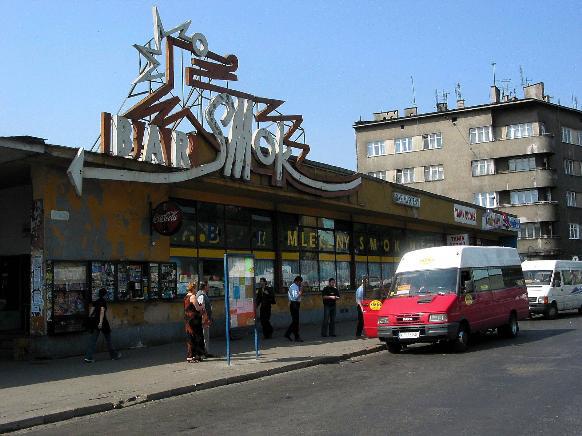
By the time I arrived, though, it had just become part of the gray. Dated and dilapidated, it was another of seemingly-endless examples of architecture that seemed like it could have never really been anything but dated.
By the time I left, though, in 2005, it was all gone: the old bus station, the Dragon Bar, and all the the gray buildings surrounding them, all torn down to make room for “Galeria Krakowa,” a modern shopping complex that could only be called a mall.
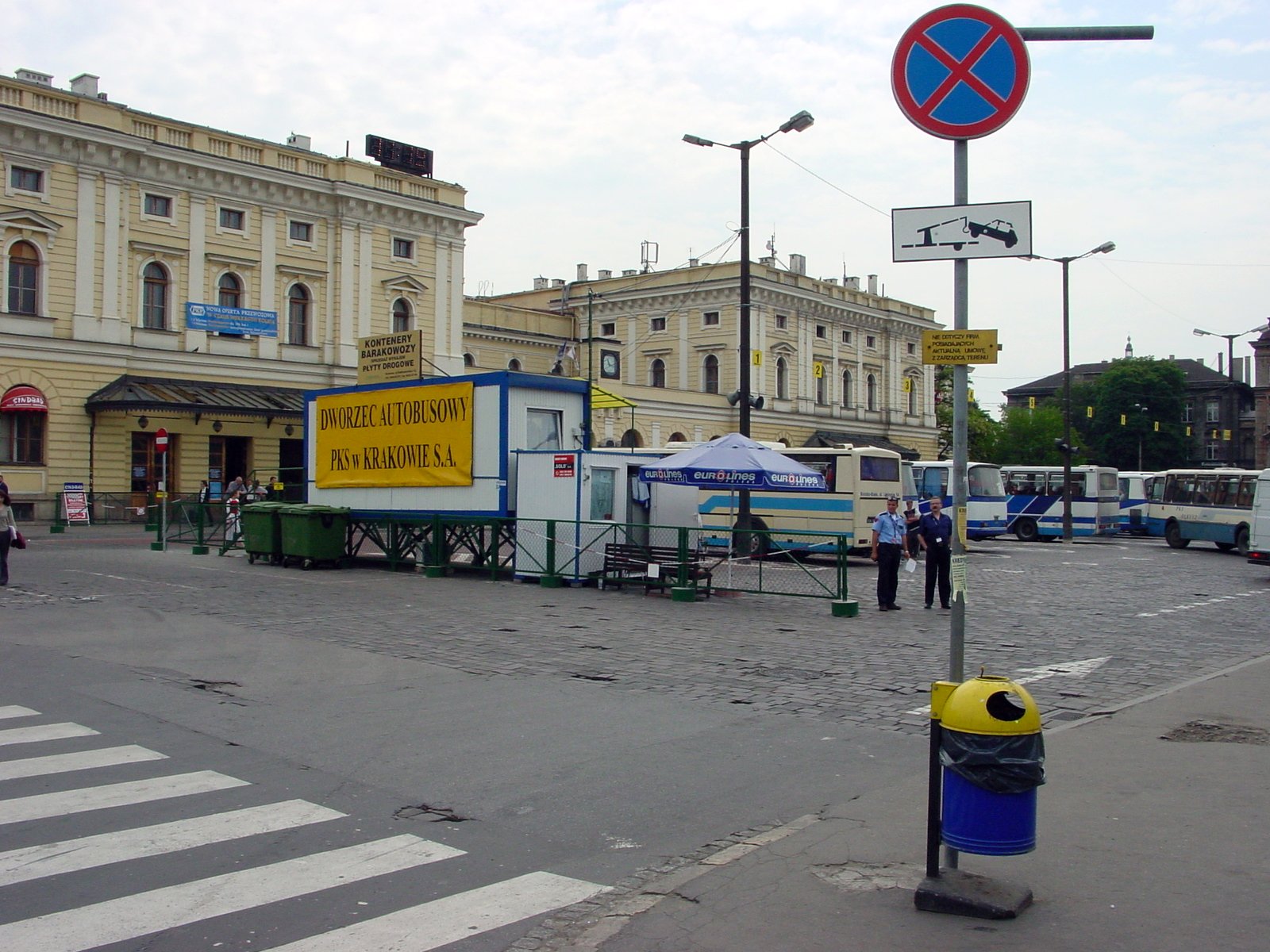
The bus station had moved to the cobblestone area in front of the train station, and the old buildings were not even a pile of rubble.
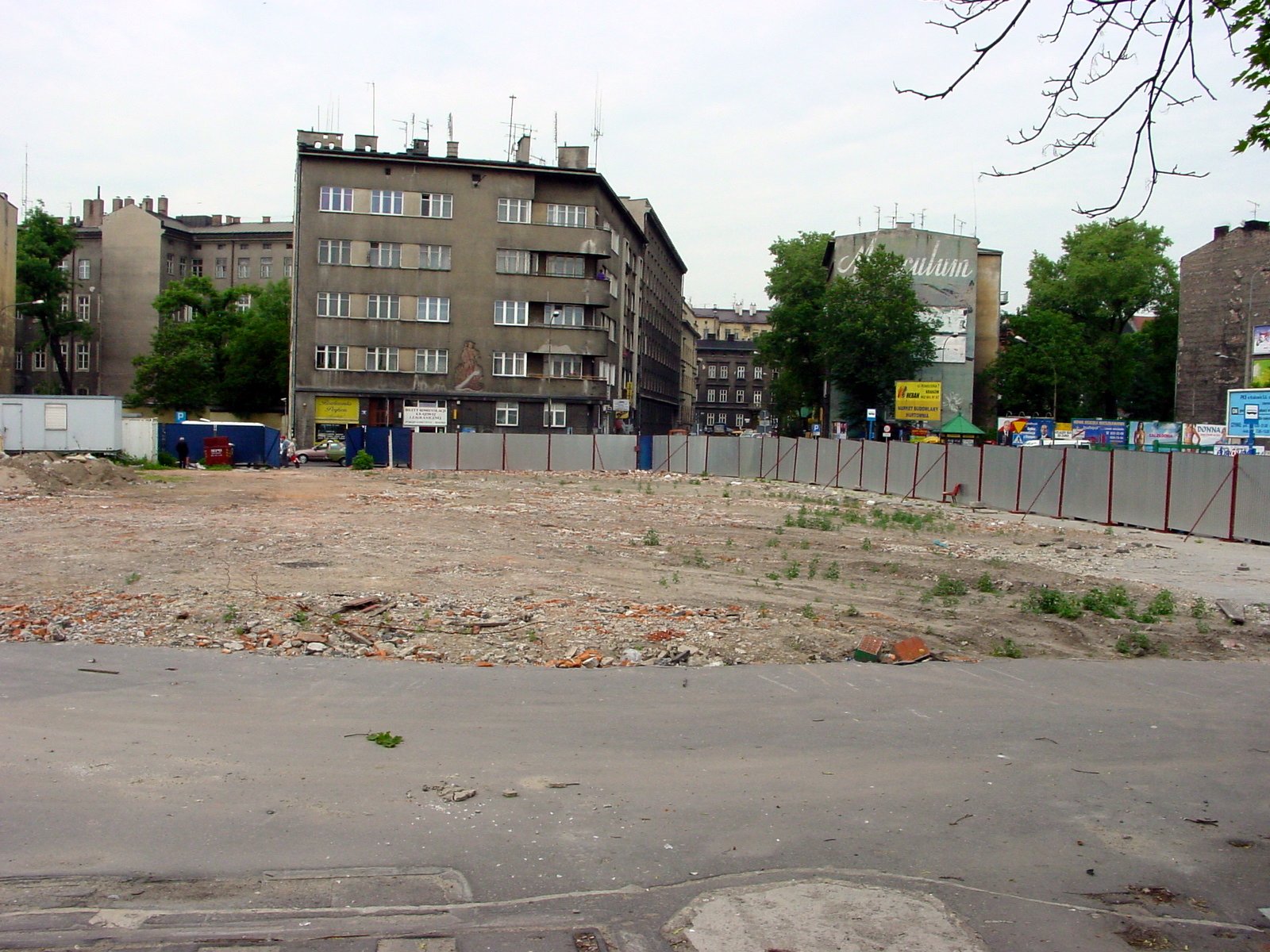
It’s tempting to say something like, “No one really misses the bus station, but it’s a real tragedy about the neon sign.” Indeed, there is a small movement in Krakow (perhaps Poland?) to rescue the neon signs of the fifties, sixties, and seventies, but there’s no sign of the Smok neon:
[P]o kilku latach nikt nie jest w stanie nam powiedzieć, gdzie się teraz znajduje “Smok”. Od kilku dni próbujemy bezskutecznie to ustalić. A tymczasem to jeden z najcenniejszych przykładów neonów krakowskich. Zaprojektował go Adam Marczyński, profesor krakowskiej ASP, związany z Grupą Krakowską.
Więcej szczęścia miał neon kina Wanda przy ul. Gertrudy, które przegrało rynkową walkę z multipleksami. Ponieważ fasada (wraz z napisem) uznana została za zabytek – neon przetrwał.
The group was able to find the neon sign for the Wanda movie theater, but only because the building that housed it was declared a historical landmark building, and so the neon survived.
It’s tempting to say that, to suggest that such an ugly building as the old PKS in Krakow is better off in memory only. Yet there seems to be a tragedy in that. Yes, it’s an ugly building. Yes, it would be, had it survived, horribly dated. But I still think there’s some value in keeping those buildings. Perhaps not all of them, but some. As it is, with fewer and fewer such places still standing every year, an entire portion of Polish architectural history is disappearing.

Left in its wake are the distinctly modern designs that seem just as destined to appearing dated at the old Bar Smok and buildings of its era.
I felt the same way about the old PKS station in Nowy Targ, a station I knew much better because of the frequency of trips I took to the NT, the nearest real city (in Poland) from where I lived.
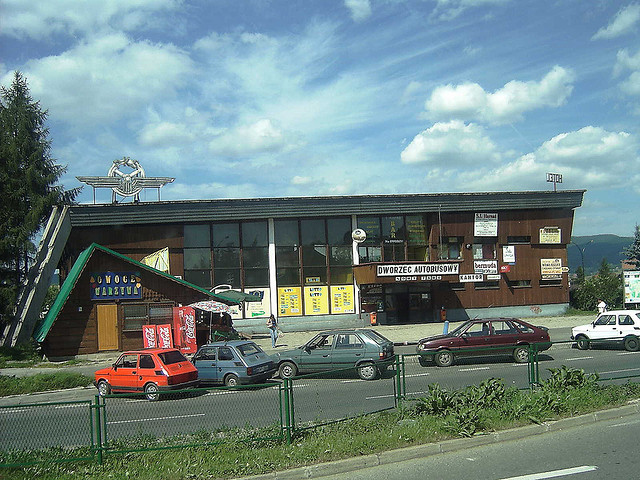
It too was strikingly dated, a relic from the sixties that was increasingly out of place architecturally. Yet that’s precisely why it should still be standing: like so much of architecture, it’s a palpable reminder of our past, of where we came from. “Perhaps Poles just want to forget that part,” a friend suggested in 2013 when we walked by the place.

Perhaps. And perhaps renovation simply wasn’t economically or architecturally feasible. Or maybe enough people just want to forget.